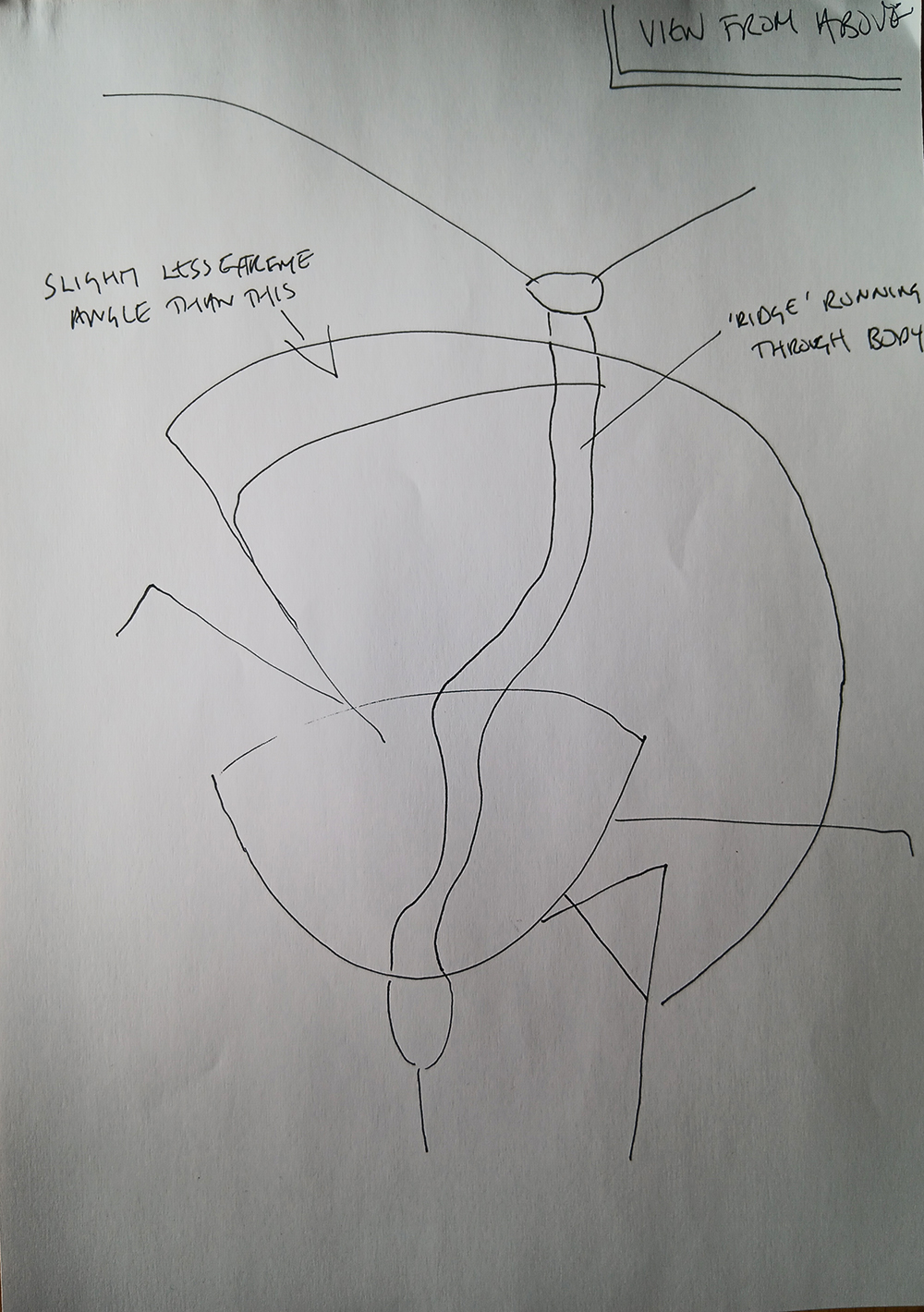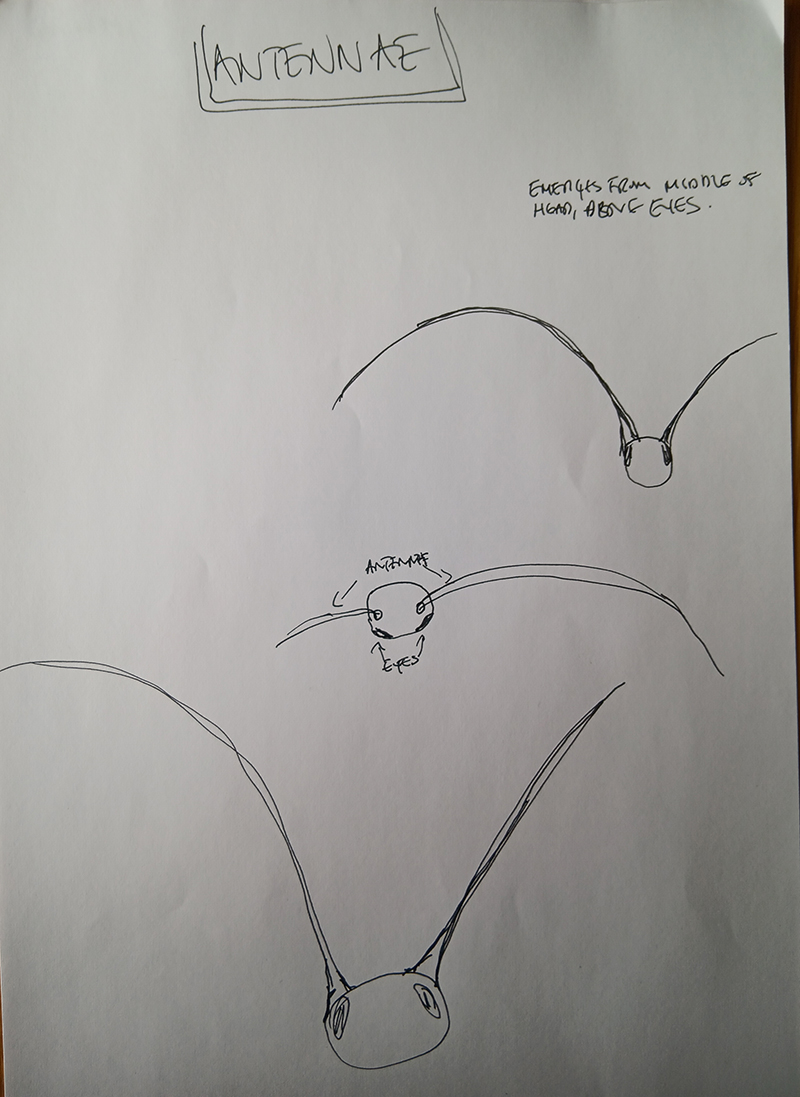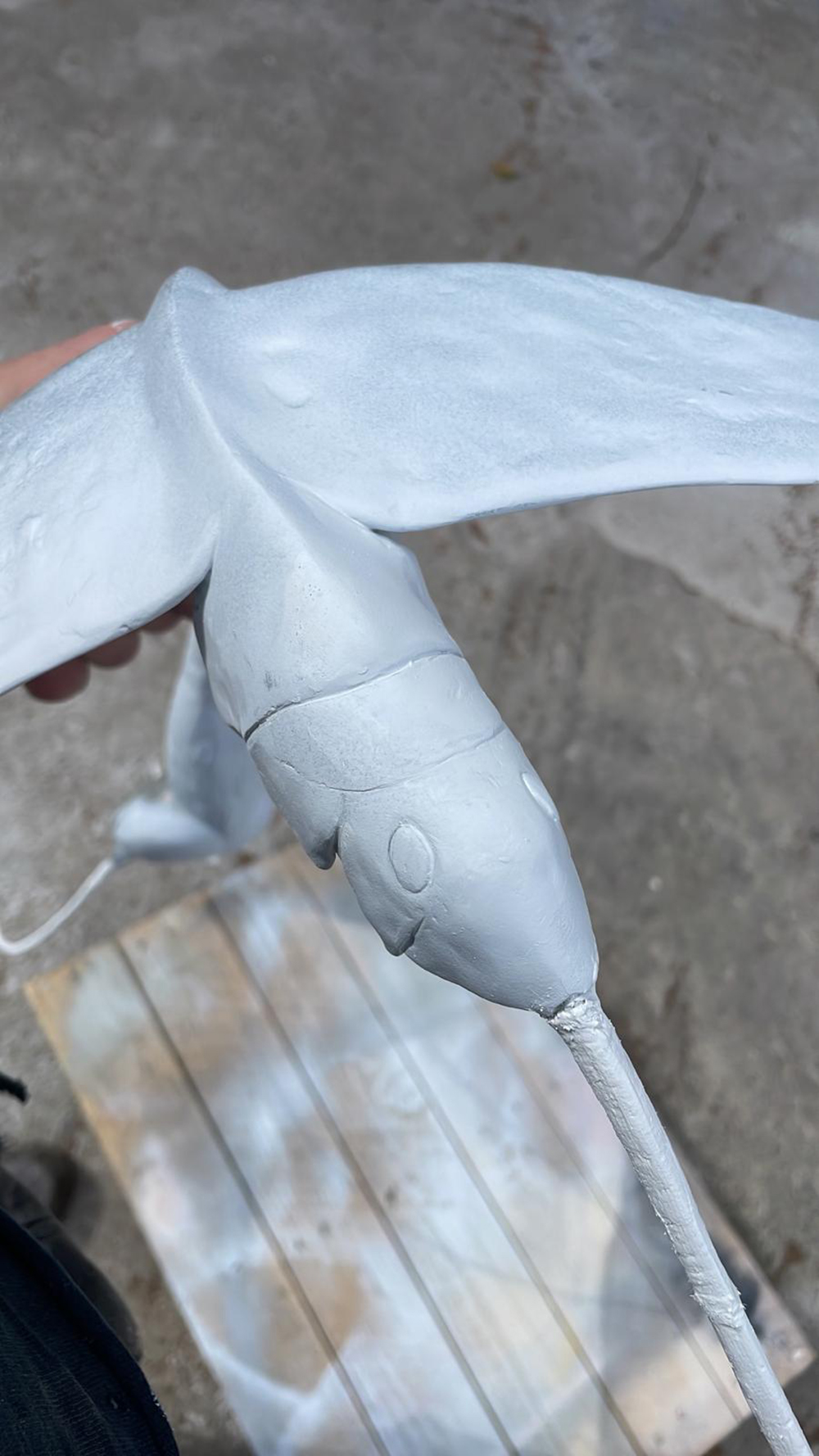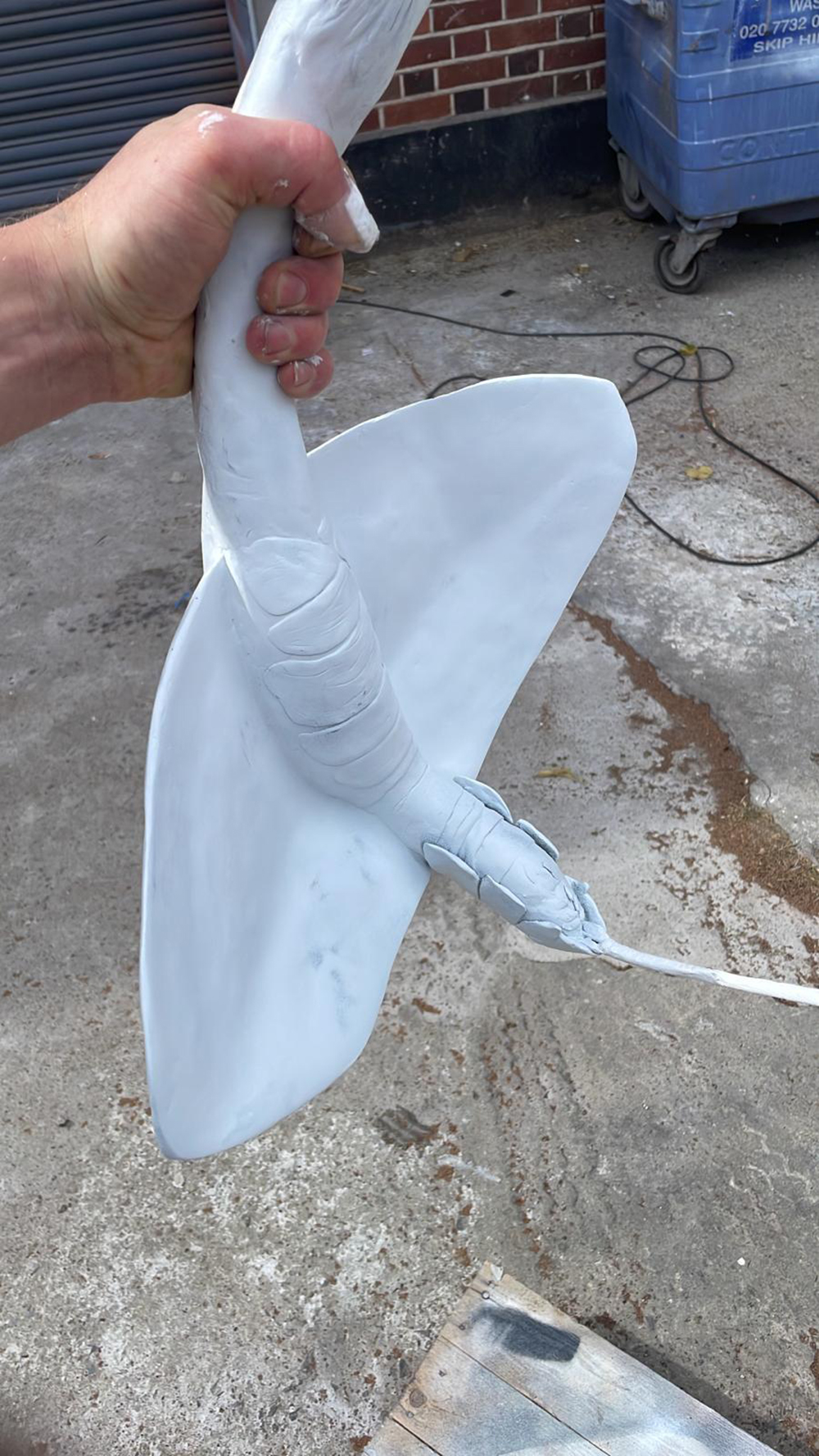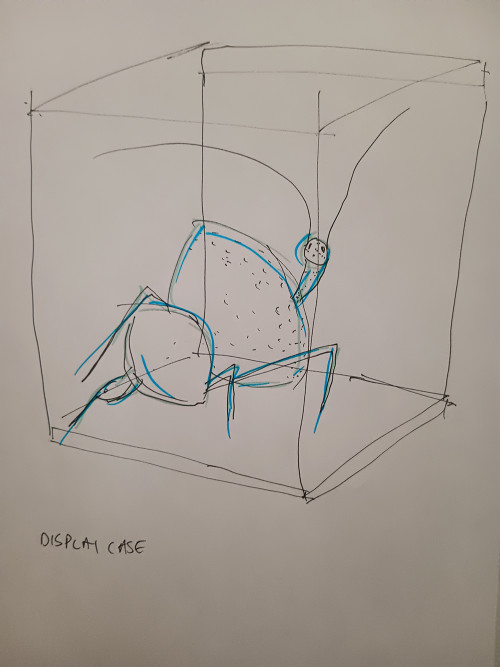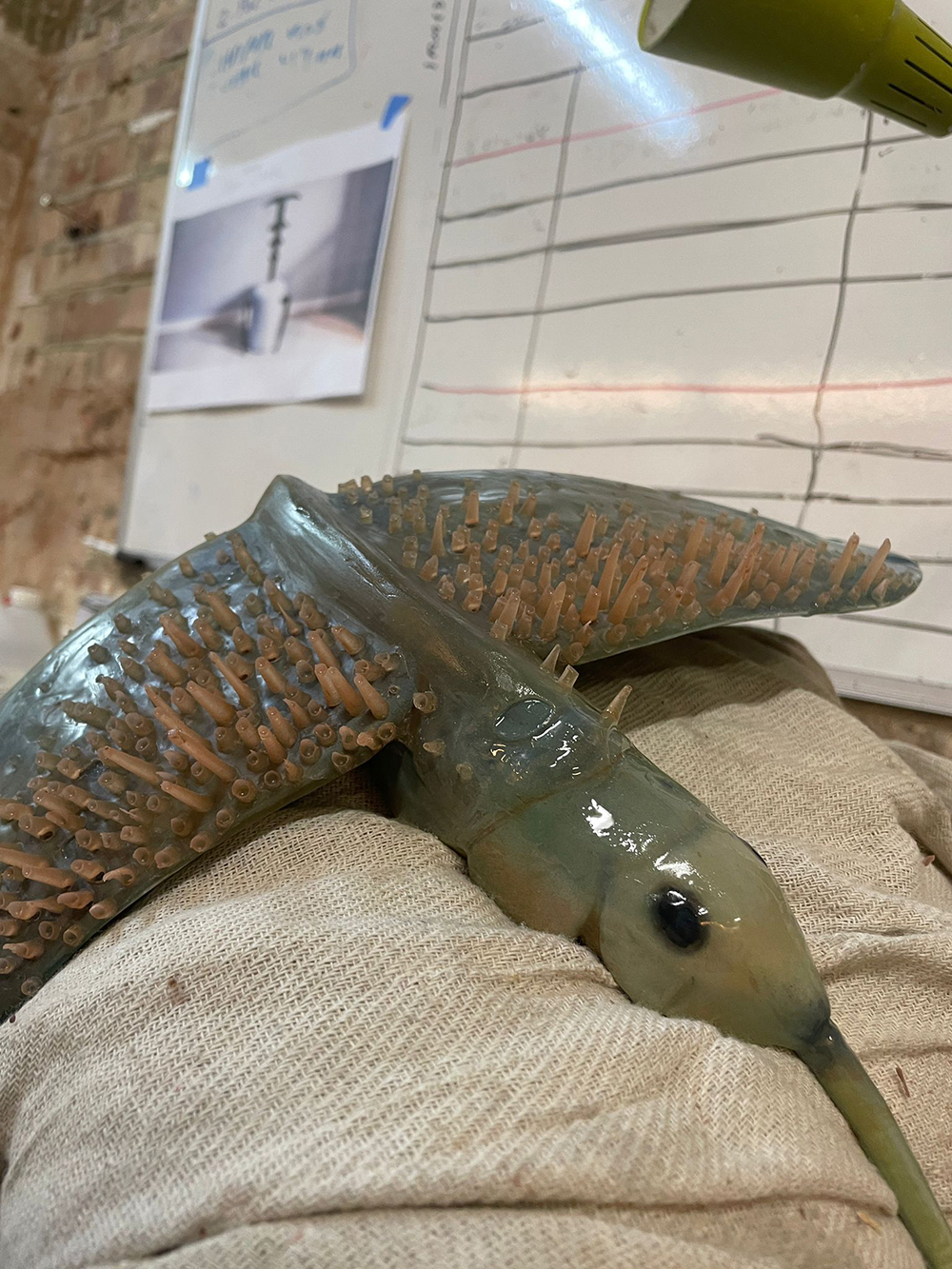
For the 20/20 commission I was based at The Box in Plymouth. The Box is a large-scale museum, gallery and archive which contains the accumulated collections of several different museums encompassing areas including Natural History, Media, Fine Art.

On my first visit I was introduced to a range of curators from different aspect of The Box’s programme. I was immediately drawn to the Natural History collection and was particularly intrigued by the ‘pickles’ – preserved marine specimens in formaldehyde.
Sarah Marden, the Natural History Curator was incredibly generous with her time and knowledge on subsequent visits. I was able to visit the stores (only a relatively modest proportion of the museum’s holdings are on display), learning about just how many specimens they have and how time consuming it is to preserve them. I was able to learn so much from Sarah’s expertise.

I also became interested in the museum display cases themselves and the ways museums categorise and organise specimens, which speaks to colonial imperatives to rank, grade and label, to control what is deemed ‘strange.’ The Box has an extraordinary series of encased sea creatures on display – fish, eels, crabs, all kinds of things I hadn’t seen before. They looked otherworldly. I spent a lot of time enjoying being surrounded by them.
Conversations with other members of staff also opened up discussion around a phenomenon fishermen in Plymouth Sounds were experiencing where octopus are overtaking the ‘native’ lobster due to global warming. This led to some questions, were native lobsters facing extinction? What other species were in the same position?

The history on display is also a record of a changing ecosystem as evidenced in the waters around Plymouth. The global story of climate catastrophe is also a local story. I wanted to explore this further.

I decided to make a sculptural object, inspired by a list of extinct and near extinct sea creatures that Sarah had share with me. My commission is a hybrid ‘monster’ composed of various parts deriving from these sea animals facing extinction. It was important that the object could potentially sit within the existing collection, that it looked similar but potentially a bit ‘off.’ By placing the object in a museum-style display case, the sculpture can find its place within the museological conventions that institutions such as The Box reproduce.
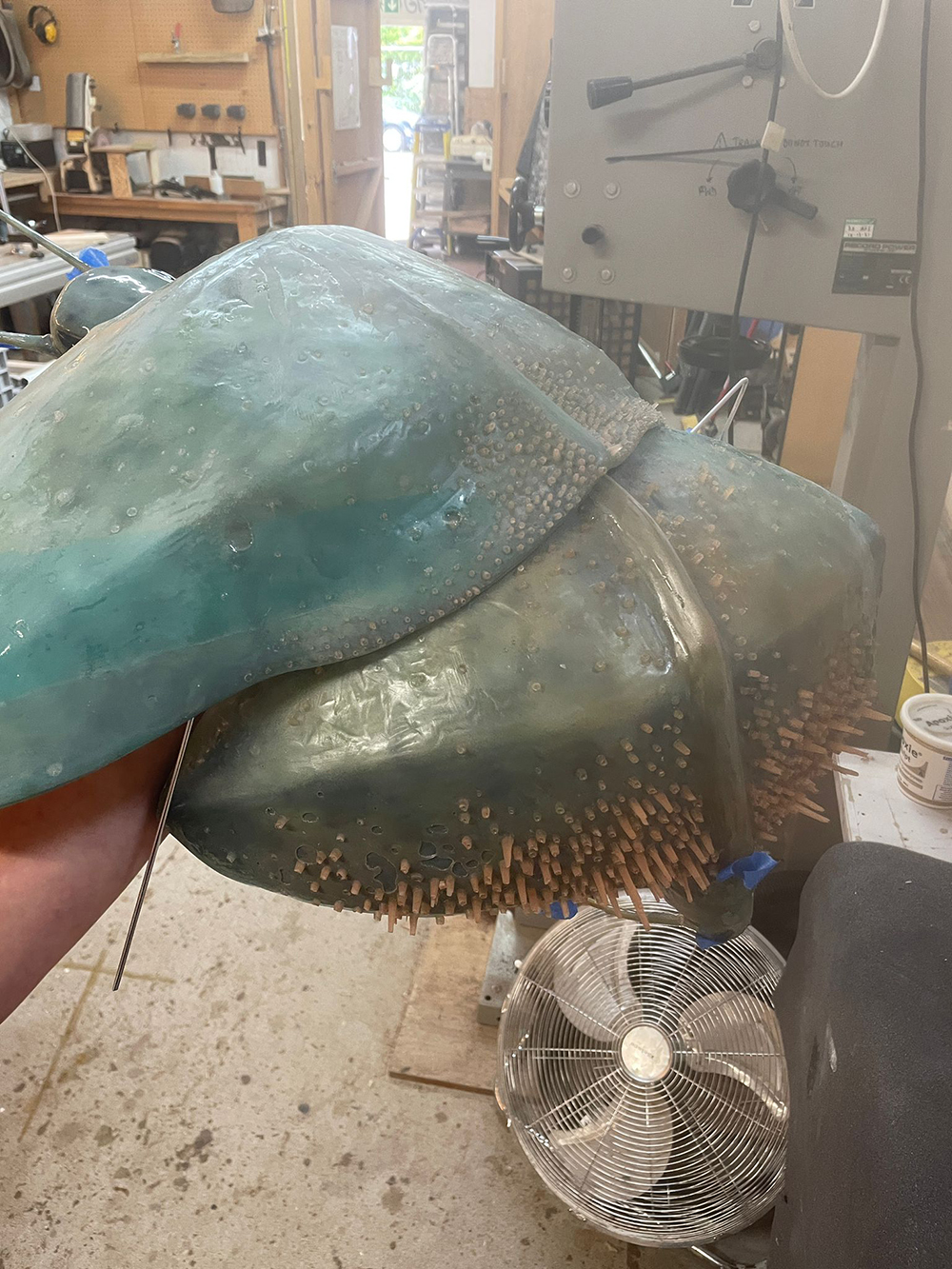
During this residency I was also introduced to Ash Ghaliadi and the work of Radical Ecology, a non-profit based in the South West working internationally across culture, research and policy for environmental justice.
Radical Ecology invited me to participate in a seminar event they ran at The Box in 2023 as part of their Black Atlantic Weekend.. I created a video, Pseudomorph (2023), based on footage I shot during my visits to Plymouth, reflecting on the story of the ‘invading’ octopus within the context of migration. This event and the range of speakers that participated undoubtedly contributed to the development of my final commission for The Box.
This period of time has allowed space for me to develop a new direction for a practice, continuing my interest in world building, speculation and the fantastical with the environment at the heart of everything. My sculpture is called hybrida composita (2024).
Partner Reflection
20/20 Partner Reflection
The Box
Terah Walkup, Fine and Decorative Art Curator
The Box was excited – in 2020, its inaugural year after a major redevelopment – to be invited to participate in the 20/20 project and be a part of its second cohort. At the heart of the port city of Plymouth, The Box’s collections encompass archives, archaeology, art, media, natural history, social history and world cultures. Through working with artists, we aim to innovate and offer fresh perspectives and connections between history and contemporary life. For the UAL 20/20 residency, The Box hosted artist and writer Sonya Dyer whose practice explores fictional narratives of the future. Often turning to the sea and its underwater depths as her subject, Sonya’s[SW1] work raises vital questions about survival in a future world affected by ecological disaster.
In July 2024, I visited Sonya Dyer at her studio in Somerset House and we took the train to Art and Assembly. There she met with fabricators and designers who were working on testing combined materials for realising her new sculpture, hybrida composita. Mounds of sticky clay and plaster moulds sat on a table. We looked at 3D models and discussed how thick glass needed to be to support approximately 85 litres of liquid or how different polyurethane resins aged over decades. This sculpture would become the first artwork acquired for The Box that involved liquid. It would also potentially weigh upwards of 350kg. As curator, my mind was whirling with questions about long-term collections care, documentation and risk assessments. But overall, among the many privileges of getting to work with Sonya and learn from her, was the opportunity to reflect on those very questions beyond their logistics, to how and why museums preserve and collect for the future – especially a future impacted by climate change.
Months before, in Plymouth, Sonya spent time with our natural history curator, Sarah Marden, exploring The Box’s marine specimen collection. The origins of this collection date back to over a century ago. Around the 1880s, amidst early concerns about the impact of industrialisation on the ocean – especially growing scarcity of certain fish around UK coasts – scientists began preserving and documenting specimens collected in Plymouth’s waters. This collection informed early research by the Marine Biological Association, which opened its Plymouth laboratory in 1888. The preserved marine specimen collection was later transferred to the museum and is now showcased in a large display of over 100 specimens that continues to fascinate visitors and spark the imagination. Milky blue-grey cuttlefish, large spindly crabs and transparent fish, named on 150-year-old handwritten labels, are preserved in glass jars of many shapes in formaldehyde and other chemicals that our team monitors through careful conservation of the collection. Many of these specimens represent species that are endangered or threated by extinction with the continued effects of climate change on a local and global scale. Sonya Dyer is the first artist to create new work responding to this collection. In doing so, she has drawn a thread from those past scientific motivations and methods to current museum practices, all concerned with preserving for an imagined future.
Sonya’s practice, in her words, allows us to time travel. Visitors today can step into the future. They encounter a creature collected a century or more ago at a time that exists a century or more into our present future. This new work asks: What creatures will survive ecological disaster? How will they adapt and survive? The sculpture hybrida composita allows us to imagine what one of those creatures in Plymouth Sound might look like. The creature sits in a glass tank suspended in liquid that gives the effect of being partially evaporated over time. Bubbles lightly dot the sculpture and tank, adding to the veracity of the experience. For its debut in March 2025, Sonya and our team at The Box have installed the work at The Box’s North Hill entrance. Visitors regularly gather around it, pausing for conversations. They often look twice, asking if it is real or not, or whether it is alive and breathing. Many have had an emotional response; the creature sparks curiosity, wonder and empathy. Dyer has often spoken about her role as an artist: to plant seeds for the future and create space to consider how to address contemporary problems through imagined futures.
The acquisition of hybrida composita reflects The Box’s vision to reimagine the future through the past and explore pressing issues of our day.
